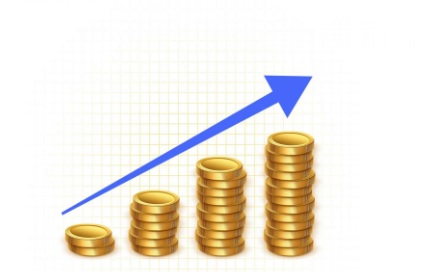Unveiling the Nexus: How Marketing Shapes Gold Pricing and Demand
In the intricate dance of global markets, few commodities hold as revered a status as gold. Beyond its intrinsic value, gold serves as a barometer of economic stability, a hedge against inflation, and a symbol of wealth and prestige. However, beneath the surface of gold’s enduring allure lies a complex interplay of marketing strategies that exert a profound influence on its pricing and demand dynamics.

Perception vs. Reality: The Power of Branding in Shaping Market Sentiment
At the heart of gold’s market dynamics lies the delicate balance between perception and reality. While gold’s fundamental properties remain constant, its perceived value fluctuates in response to external factors such as economic indicators, geopolitical tensions, and investor sentiment. Here, the role of branding and marketing cannot be overstated. Through strategic messaging, imagery, and association with luxury and opulence, marketers shape consumer perceptions of gold as a timeless store of value and a symbol of prosperity.
Leveraging Emotional Triggers to Drive Demand
In the realm of commodities, emotional triggers play a pivotal role in driving consumer behavior. Gold, with its rich cultural significance and historical symbolism, holds a unique allure that transcends mere financial considerations. Marketers capitalize on this by tapping into universal emotions such as security, prestige, and legacy. By framing gold ownership as a tangible manifestation of stability and success, they create a sense of urgency and desire among investors and consumers alike.
Influencing Investor Behavior through Market Narratives
In the fast-paced world of financial markets, narratives often wield more influence than raw data or analysis. Here, marketing strategies come into play as storytellers, shaping the narrative surrounding gold’s role as a safe haven asset and portfolio diversifier. Through thought leadership, research reports, and media outreach, marketers reinforce the narrative of gold as a reliable hedge against economic uncertainty and market volatility. This, in turn, fuels investor demand and contributes to upward pressure on gold prices.
Education as Empowerment: Demystifying Gold Investment
Despite its timeless appeal, gold investment remains a complex and nuanced endeavor for many consumers. Here, education emerges as a powerful tool for empowering investors and driving demand. Marketers leverage a variety of channels, from educational websites and seminars to social media campaigns and interactive tools, to demystify the intricacies of gold investment. By providing accessible information on topics such as gold purity, storage options, and market trends, they enable consumers to make informed decisions and confidently enter the gold market.
Harnessing Digital Platforms for Outreach and Engagement
In an increasingly digital world, marketers must adapt their strategies to meet consumers where they are. Digital platforms offer unparalleled opportunities for outreach and engagement, allowing marketers to reach a global audience with targeted messaging and personalized content. From social media campaigns and influencer partnerships to immersive virtual experiences, brands leverage digital innovation to foster meaningful connections with consumers and investors interested in gold.
Conclusion: The Evolution of Gold Marketing in a Dynamic Market Landscape
In conclusion, the role of marketing in shaping gold pricing and demand cannot be understated. From influencing market sentiment and driving consumer behavior to empowering investors through education and leveraging digital platforms for outreach, marketers play a multifaceted role in the gold ecosystem. By understanding the nuances of consumer psychology and adapting to evolving market dynamics, brands can position gold as not just a financial asset, but a timeless symbol of wealth and stability in an ever-changing world.
Embracing Sustainability: The Rise of Ethical Gold Marketing
In recent years, consumers and investors alike have become increasingly conscious of the environmental and social impacts of their purchasing decisions. This shift towards sustainability has prompted gold marketers to embrace ethical sourcing and responsible mining practices as key differentiators. By highlighting certifications such as Fairtrade Gold and initiatives to minimize environmental harm, brands appeal to conscientious consumers who prioritize ethical considerations in their investment choices.
Navigating Market Volatility: The Role of Risk Management Strategies
Gold’s status as a safe haven asset makes it particularly attractive during times of economic uncertainty and market volatility. Marketers leverage this perception to position gold as a hedge against inflation, currency devaluation, and geopolitical risks. Through targeted messaging and risk management strategies, such as dollar-cost averaging and diversification, they instill confidence in gold’s ability to preserve wealth and mitigate downside risk in investment portfolios.
Cultivating a Sense of Tradition and Legacy
In an age of rapid change and technological advancement, gold’s timeless allure lies in its association with tradition, heritage, and legacy. Marketers tap into this sentiment by celebrating gold’s rich history and cultural significance across diverse societies and civilizations. By framing gold ownership as a tangible link to the past and a legacy to be passed down through generations, they evoke a sense of pride and nostalgia that resonates with consumers seeking enduring value in an uncertain world.
Fostering Community and Engagement through Social Responsibility
Beyond its economic and aesthetic appeal, gold serves as a catalyst for positive social change and community development in many regions around the world. Marketers recognize the power of social responsibility as a means to foster goodwill and build trust among consumers and stakeholders. Through philanthropic initiatives, community partnerships, and transparent supply chain practices, brands demonstrate their commitment to making a positive impact beyond profit margins, earning the loyalty and support of socially conscious consumers.
Conclusion: Charting the Course Ahead in Gold Marketing
In conclusion, the intersection of marketing and gold pricing and demand is a dynamic and multifaceted landscape shaped by a myriad of factors, from consumer perceptions and market trends to ethical considerations and social responsibility. By understanding the complexities of the gold market and embracing innovative strategies that resonate with today’s consumers, marketers can navigate this landscape with confidence, positioning gold as not just a financial asset, but a symbol of enduring value, stability, and social responsibility in an ever-changing world.










